This was our fourth trip to Yellowstone, and we keep going back because of the amazing wildlife. It’s always an adventure, but this year was especially so for two reasons—the visible wildlife and the out-of-character weather.
Weather: We traveled to Yellowstone from Grand Teton, the day after a snowstorm, and the roads had barely been plowed when we went through. Scary driving in our RV for sure, but we made it safely through the southern portion of the park, over the Continental Divide 3 times, and out to West Yellowstone, Montana, where we camped.
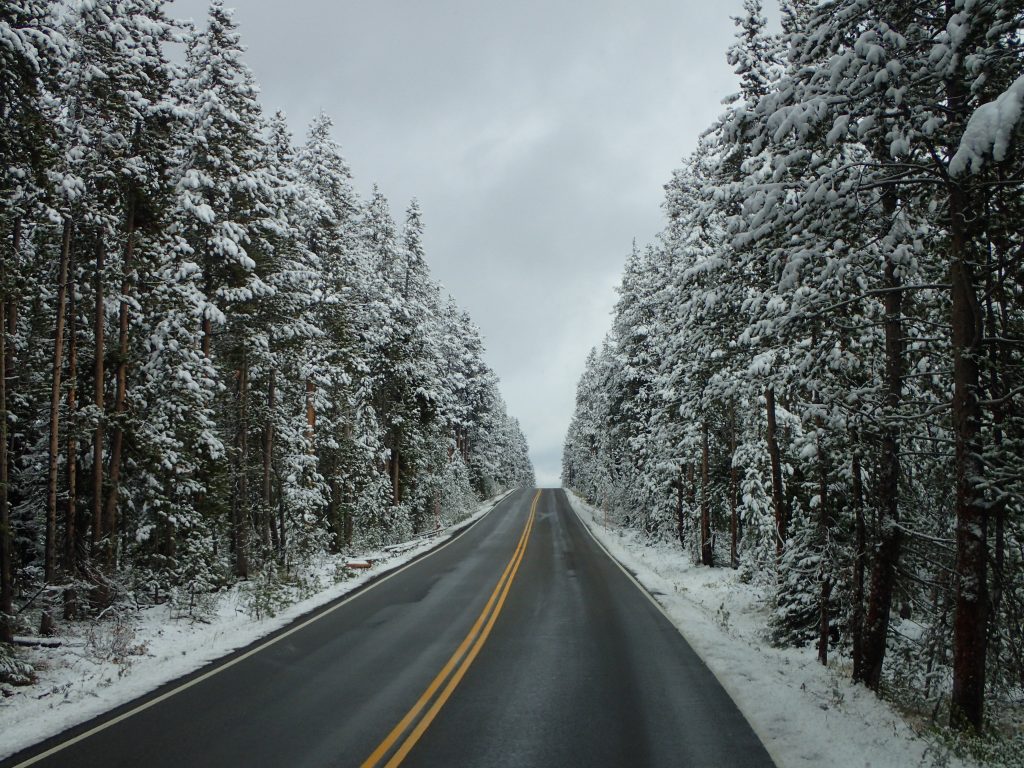
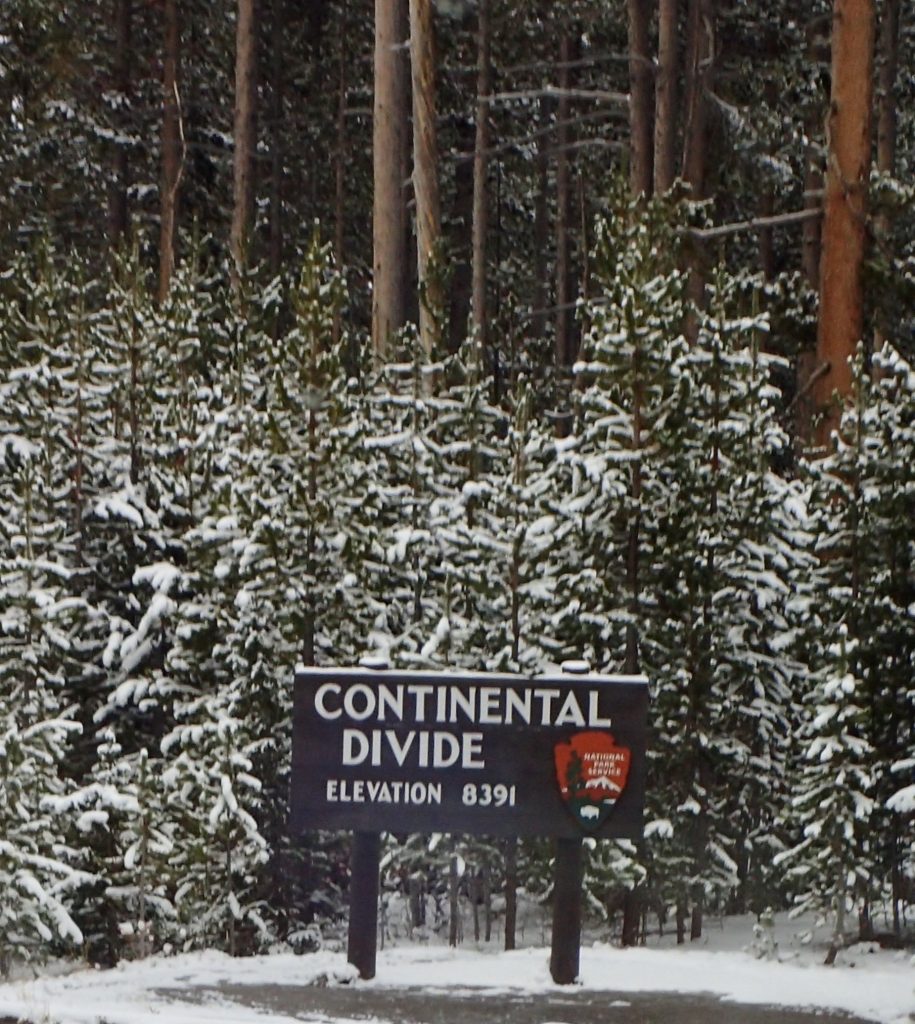
Our first day of exploration involved more scary driving, this time in the car, as we ventured over to the Canyon side of the park on barely-plowed roads and temperatures in the 20s (for those who haven’t been before, the main Yellowstone road [Grand Loop] is in a figure-8 shape, covering 142 miles, so getting anywhere in the park takes a while).
Wildlife: Along the Madison River, we were blessed with a riverside-sighting of an elk herd—common at this time of year during the rut.
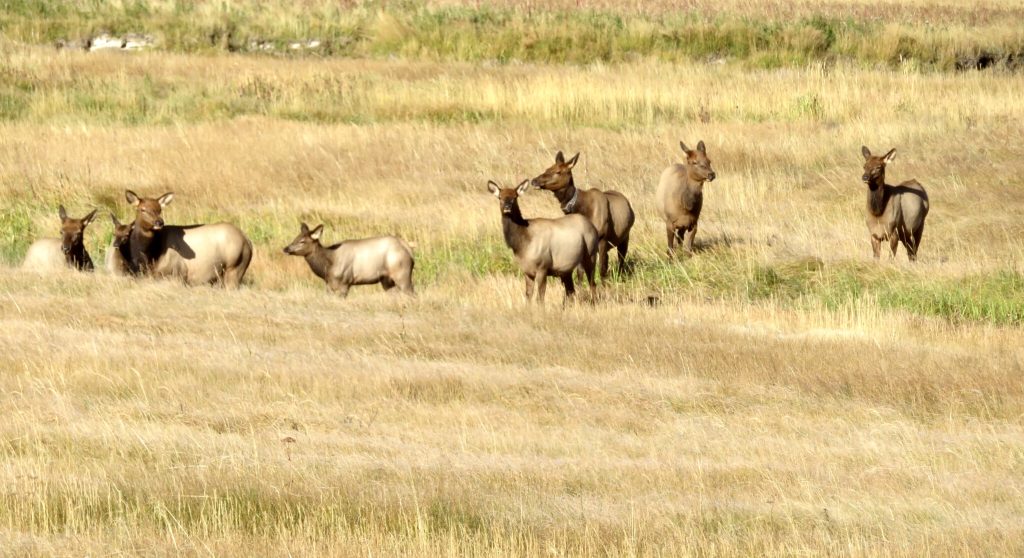
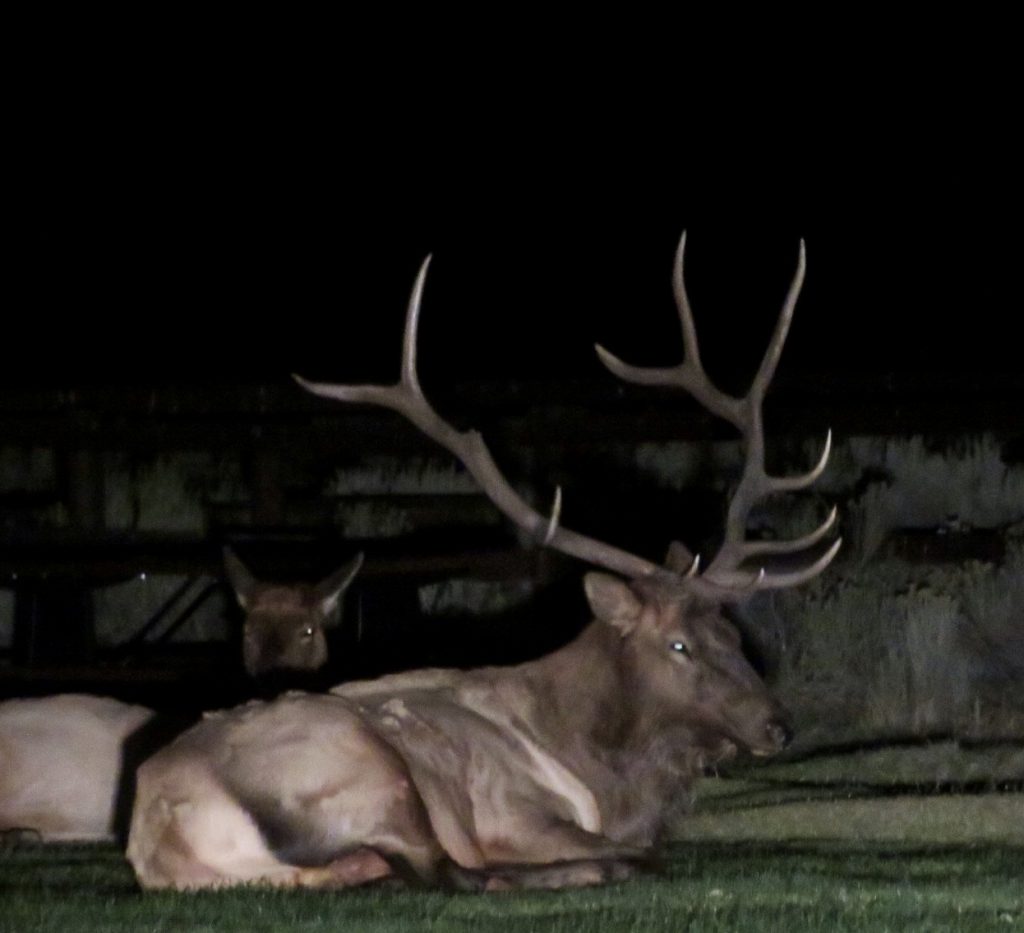
We took the ranger’s recommendation and did a 3 ½-mile loop hike starting at Artist Point (overlooking the Grand Canyon of the Yellowstone), passing an unnamed thermal area with mud pots and steaming vents, continuing by Clear Lake, viewing Yellowstone Falls from Uncle Tom’s Point and then returning via the South Rim Trail to Artist Point with its lovely views of the canyon.
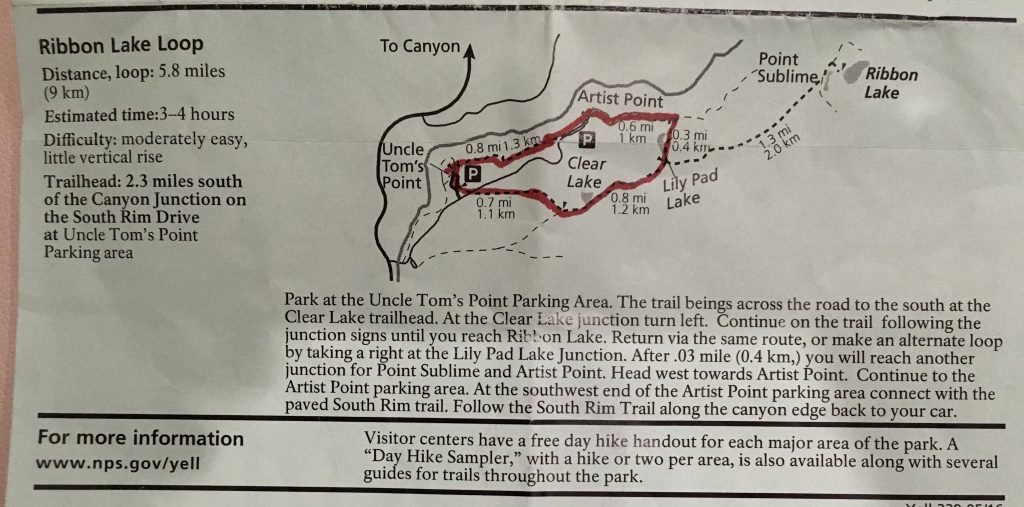

We didn’t know we would be hiking in the ice and snow, but it worked out just fine. Whew!
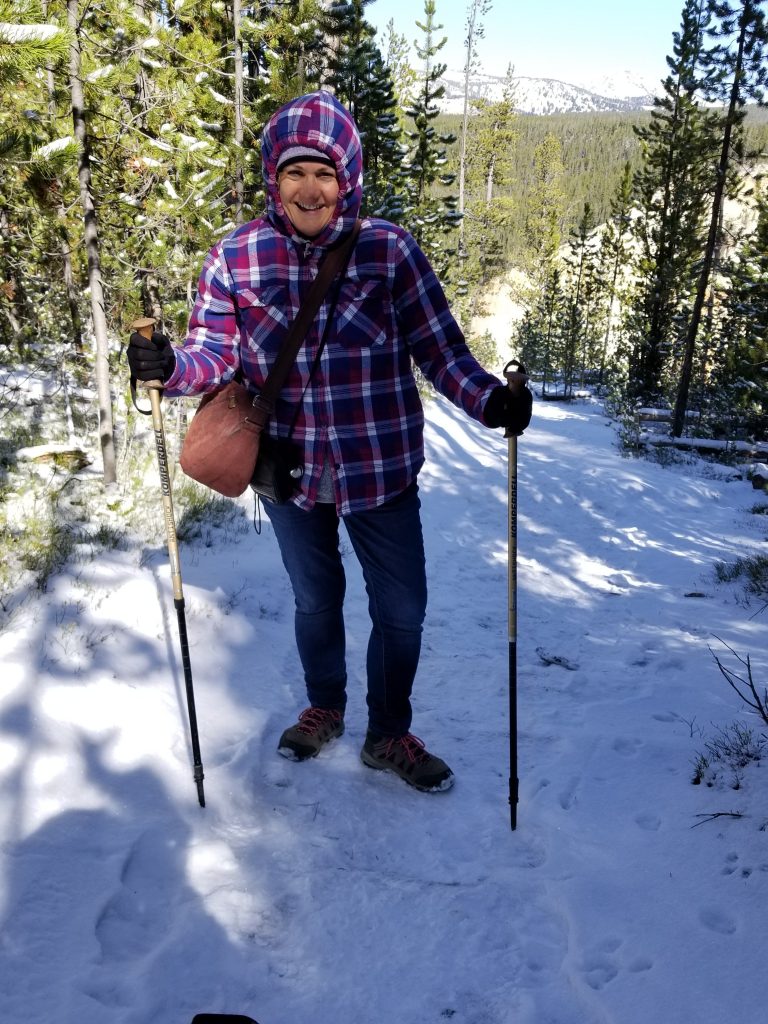
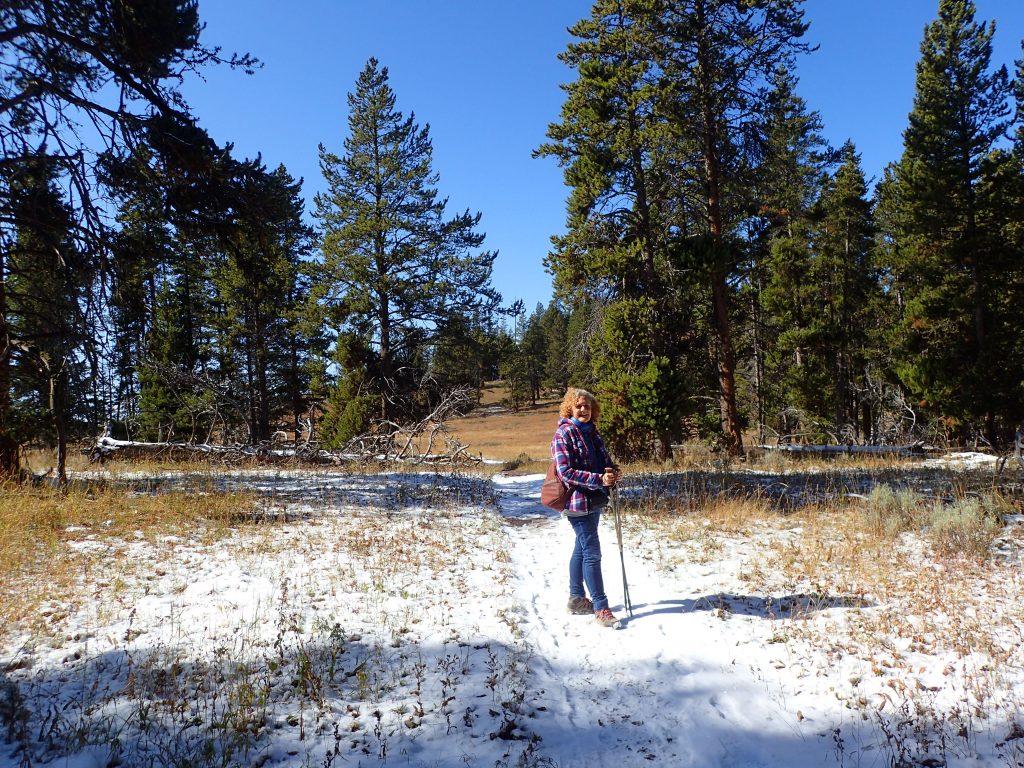
The thermal features warmed us up partway through the hike.

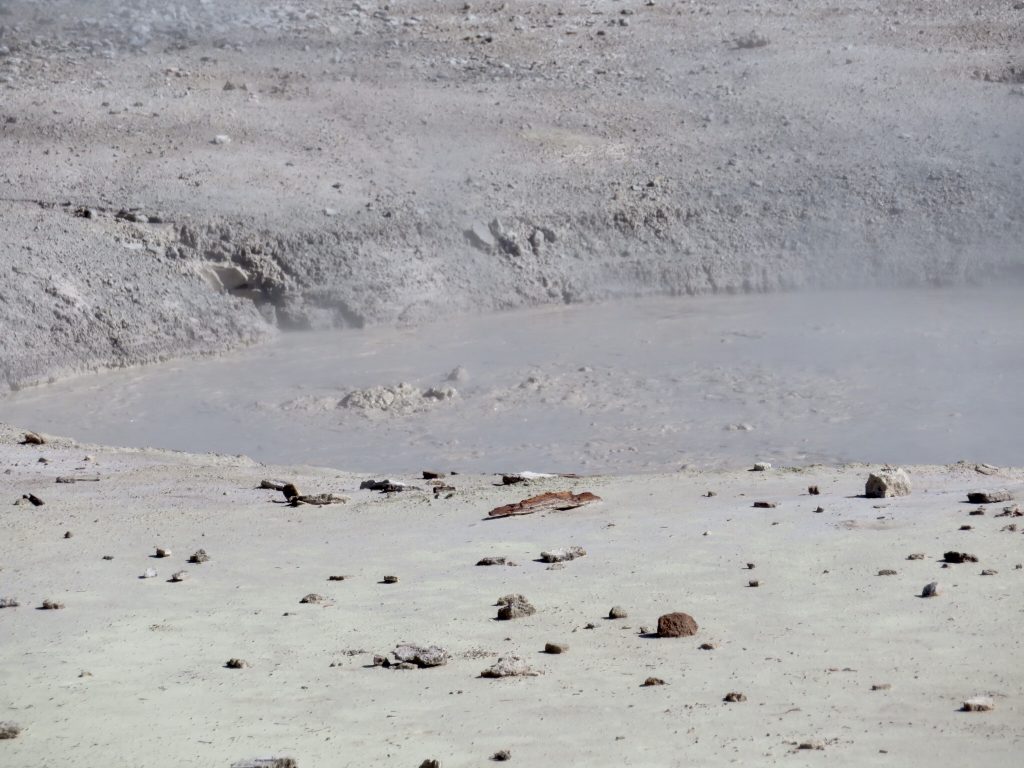
Uncle Tom’s Point gave us close-up views of a single bison and Upper Yellowstone Falls.
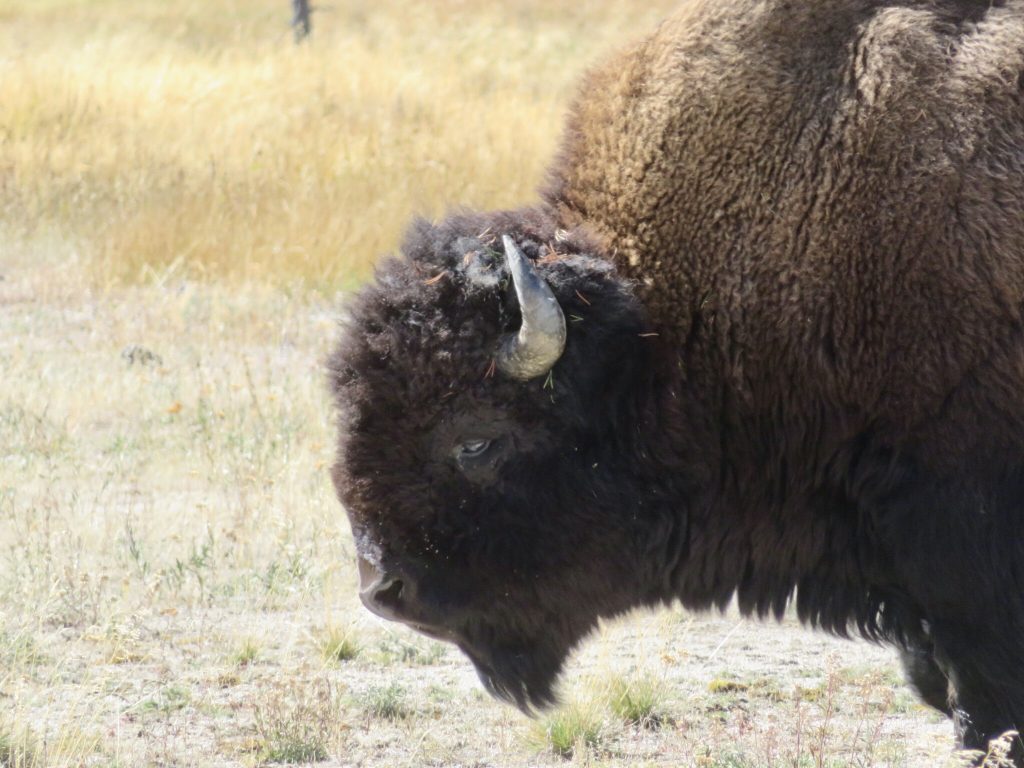
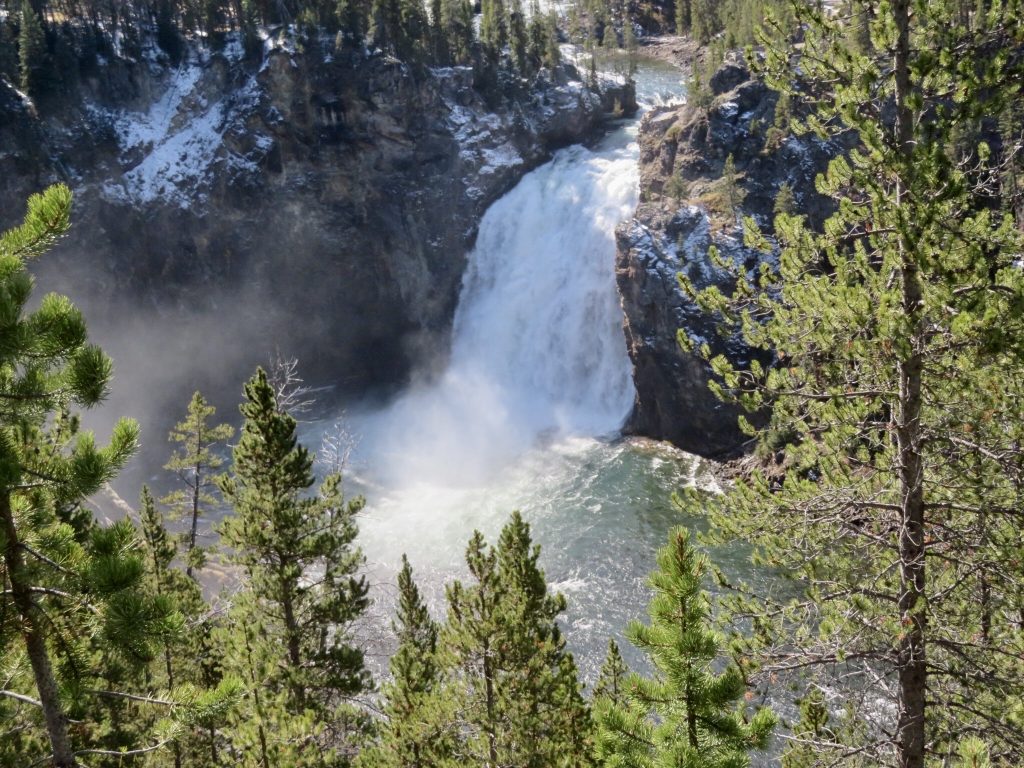
Artist Point gave us views of Lower Yellowstone Falls and the weird, beautiful colors embedded in the canyon walls.
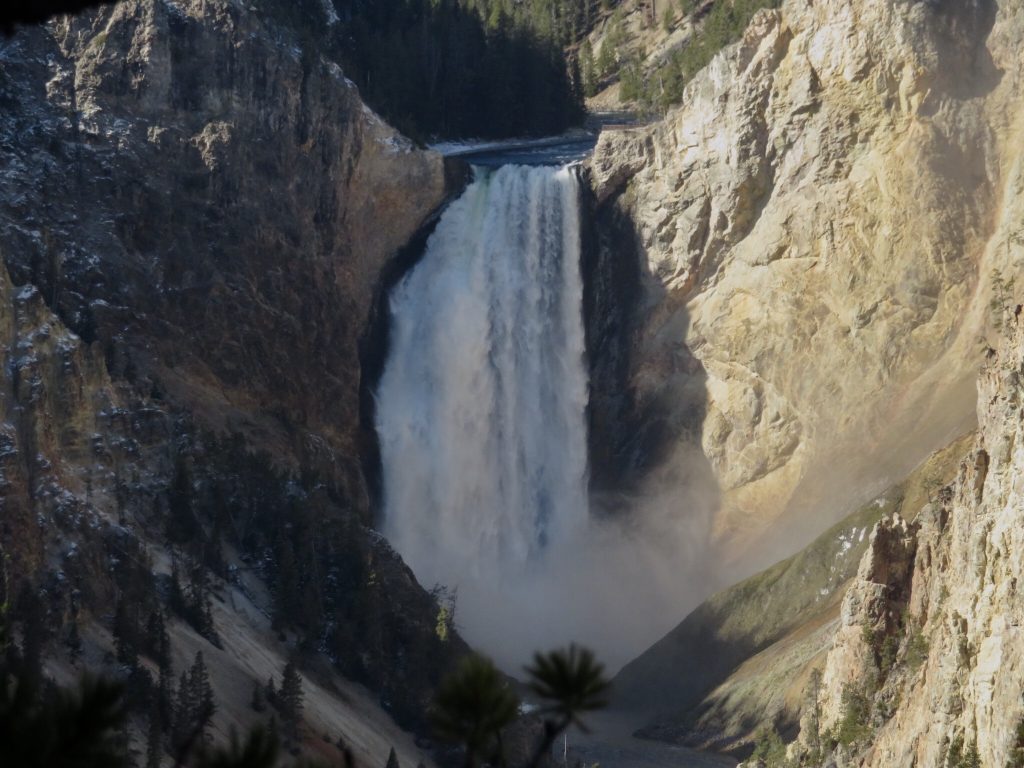
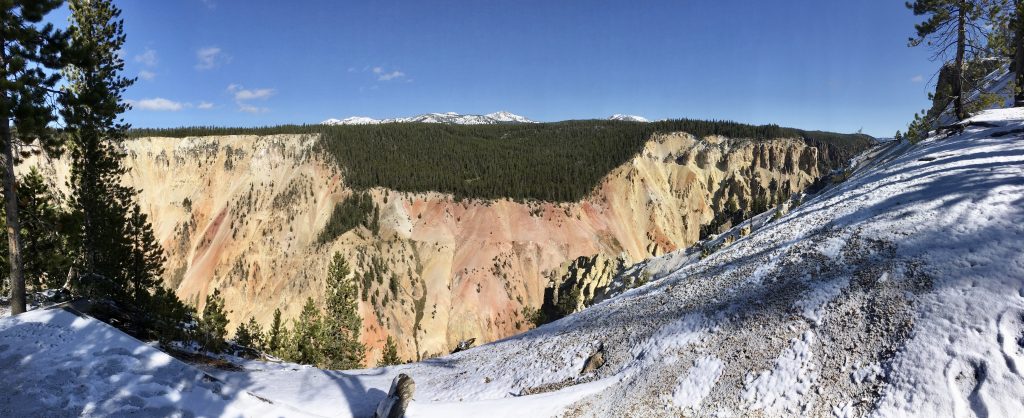
After our energetic hike, we hopped in the car and headed south into Hayden Valley, on the lookout for more wildlife near the Yellowstone River—trumpeter swans and bison are pretty reliable here.
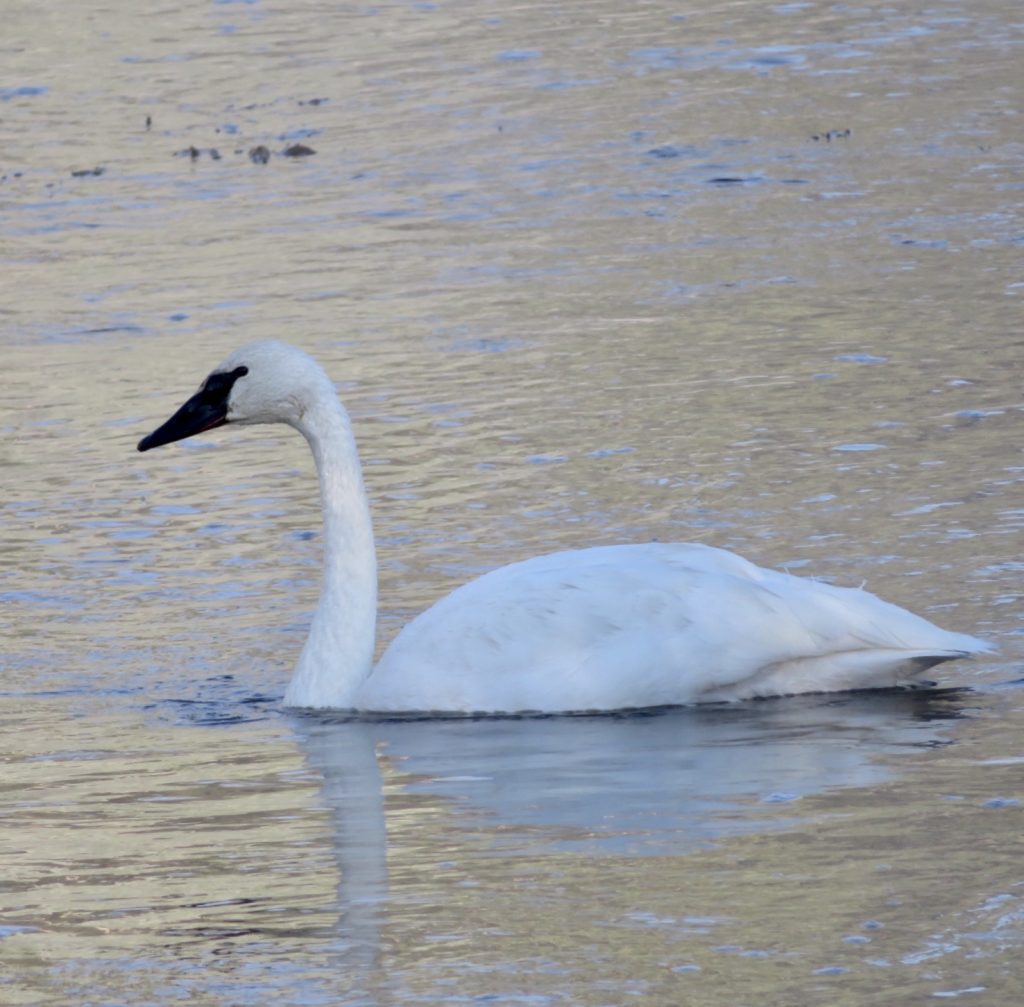
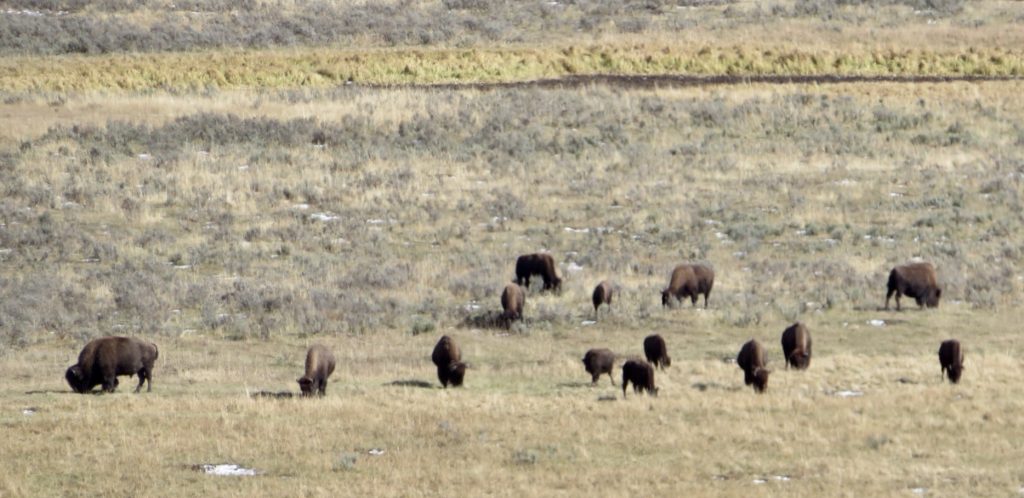
Geysers: We stopped at the Norris Geyser Basin in the late afternoon, hoping that Steamboat Geyser would erupt for us, but she just teased us. (Question: Do scientists use feminine pronouns for geysers?) Steamboat had failed to erupt from 2014 to 2018, but in the last few months, she has been erupting about once a week, but never predictably. Steamboat is the tallest active geyser in the world (over 300 feet), so it would have been a treat to see her erupt. But it was still fun to watch her give us a little eruption.
Before we left Norris, we were treated to an amazing eruption of steam from an unnamed source (possibly Hurricane Vent), which we were pretty sure we had never seen before.
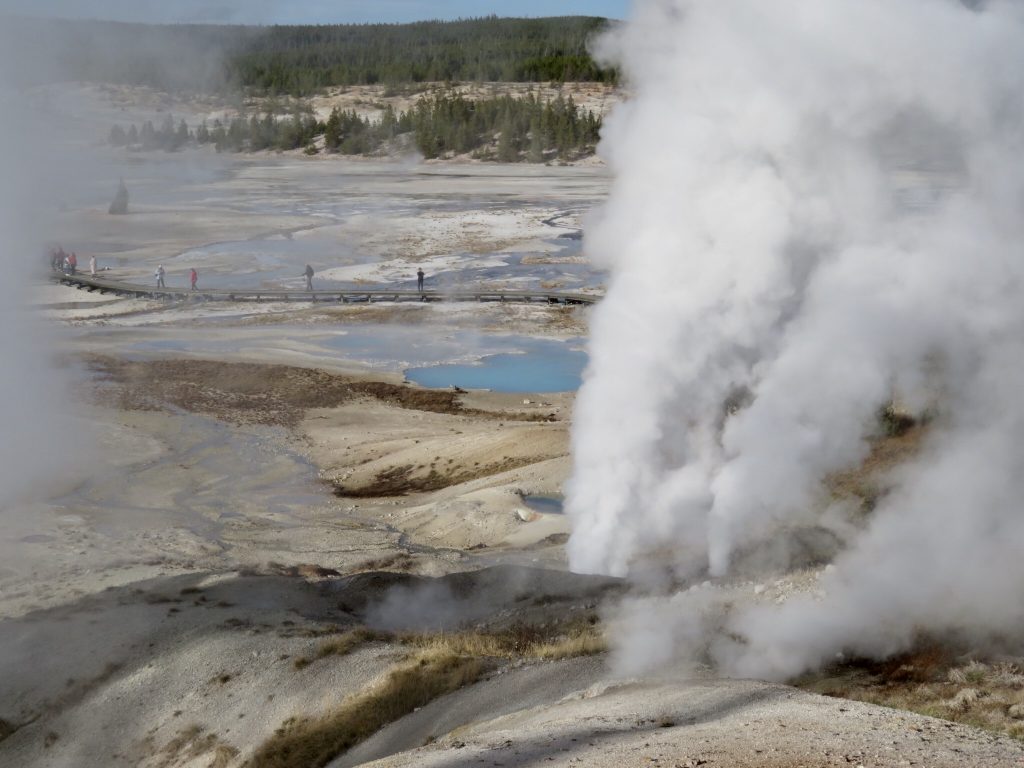

Wildlife: Not done with our Sunday adventures yet, we happened upon a grizzly bear by the side of the road on our travels between Norris and Madison Junction. I would have taken better pictures, but the ranger was not happy that I was out of the car and less than 100 yards from the bear (even though the bear was down by the river and I was up on the road). It was a great birthday present to see a grizzly!
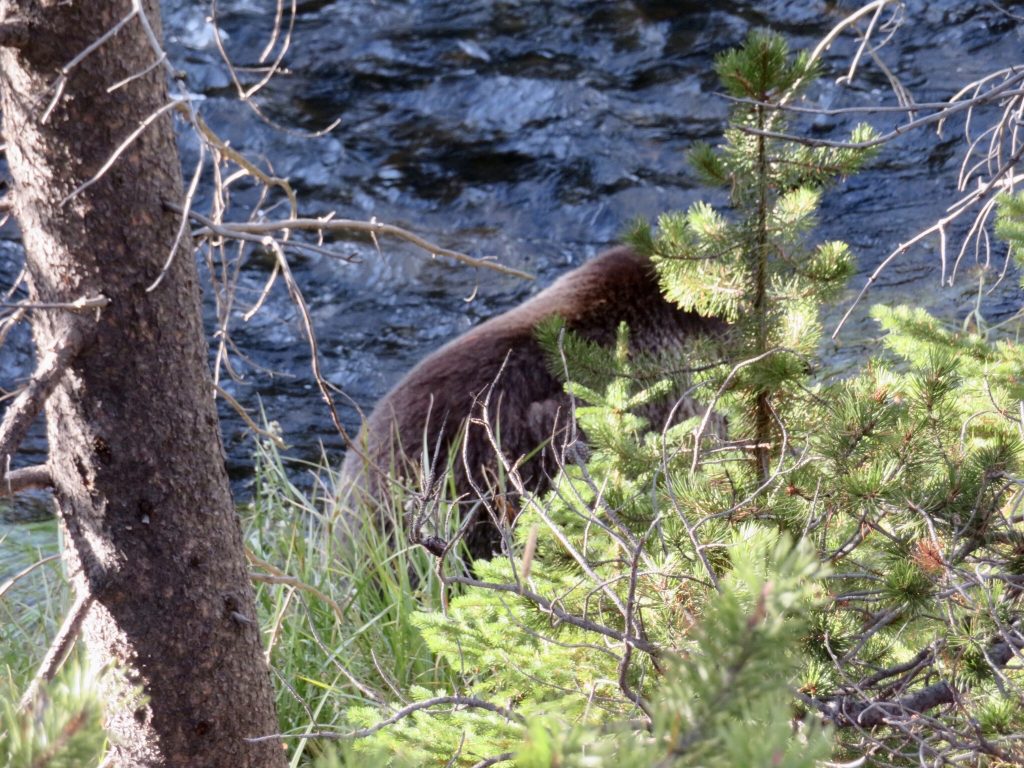
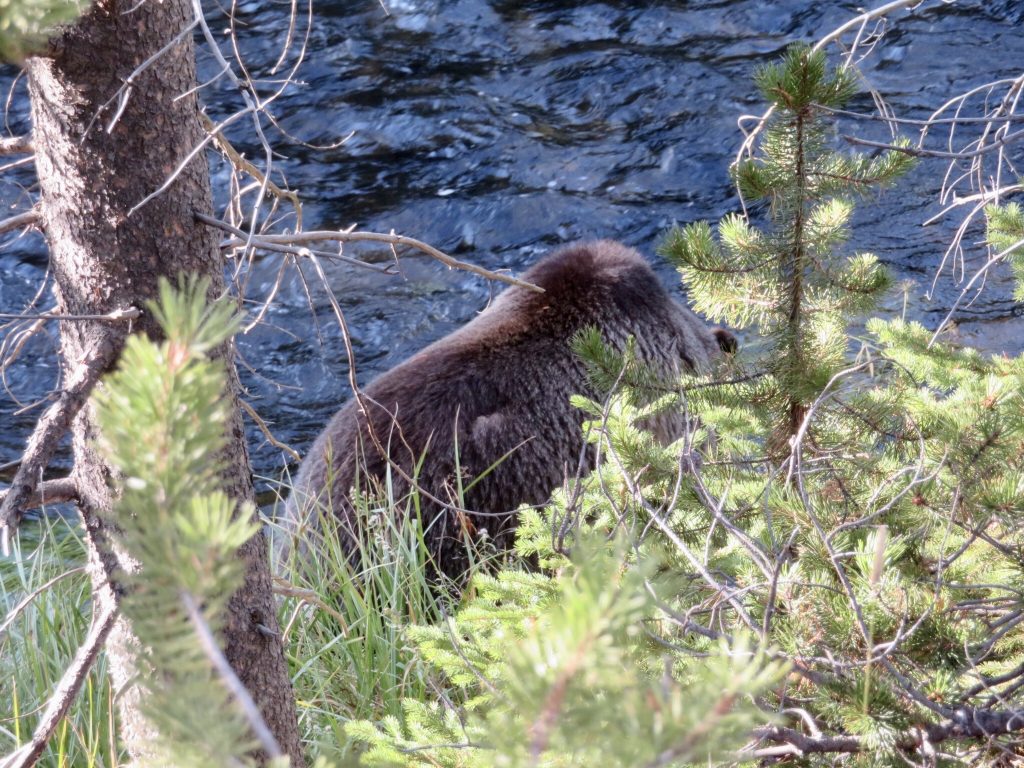
Day 2 saw us heading to Old Faithful geyser territory for the day. An early morning drive around Firehole Lake Drive gave us a couple of shots of inactive geysers, and many shots of very active bison.
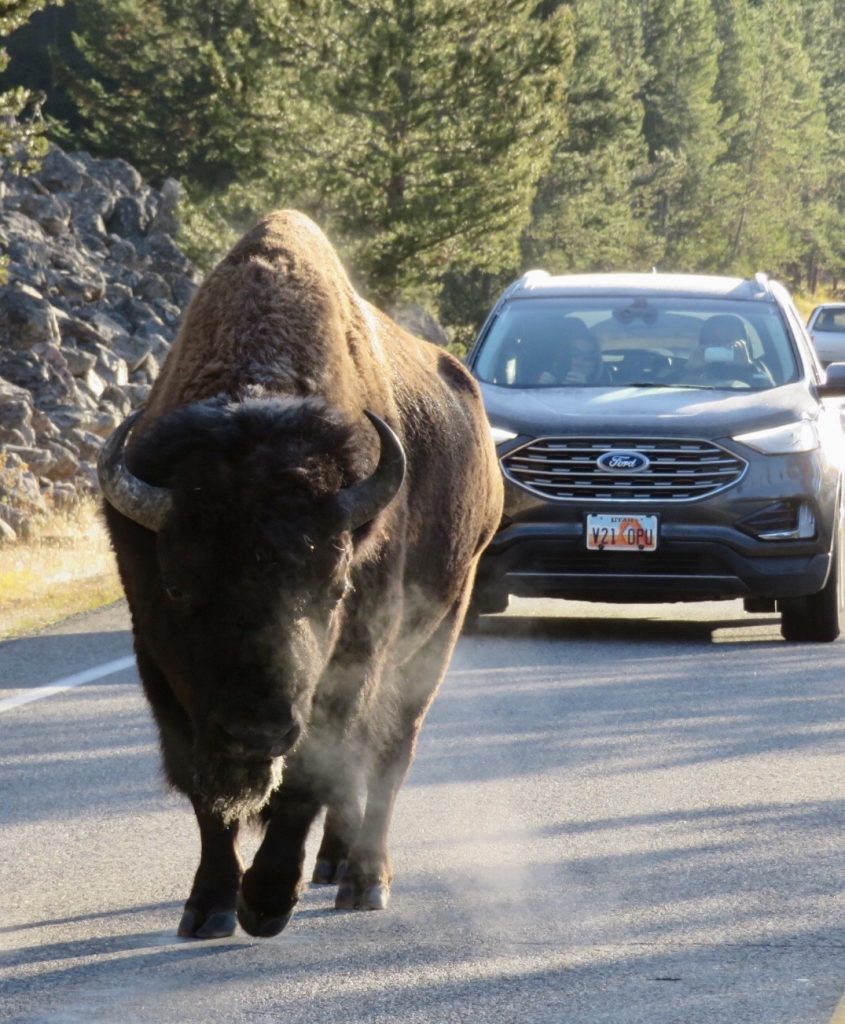
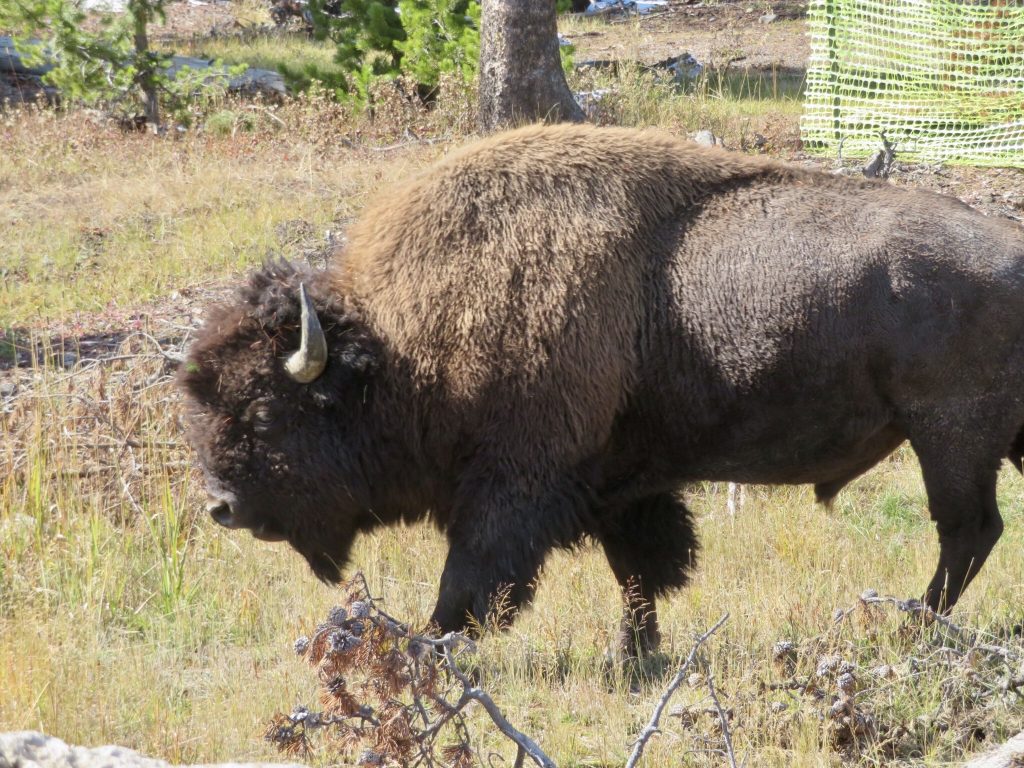
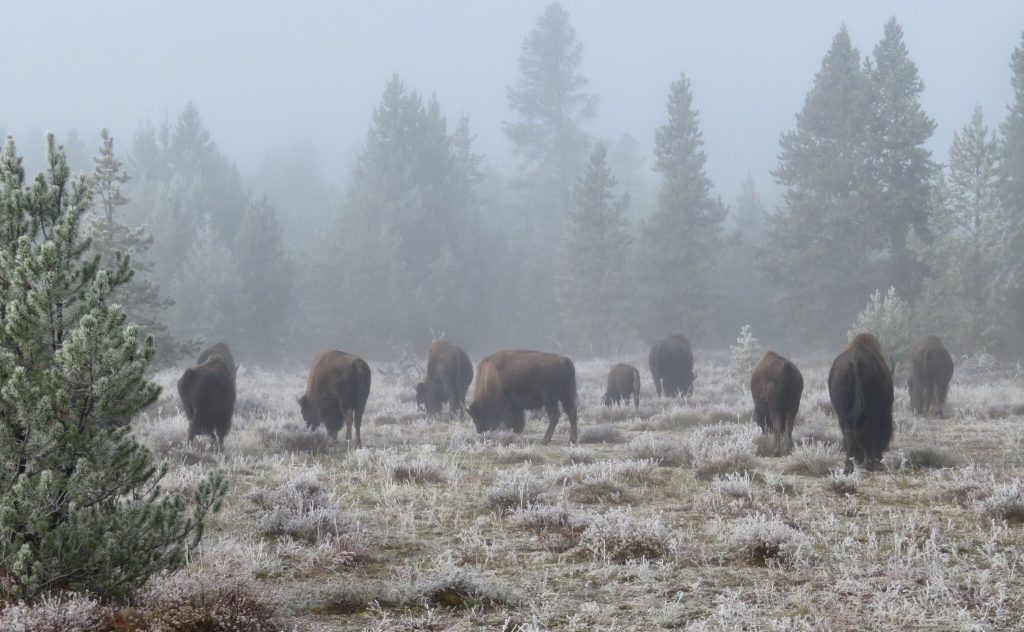
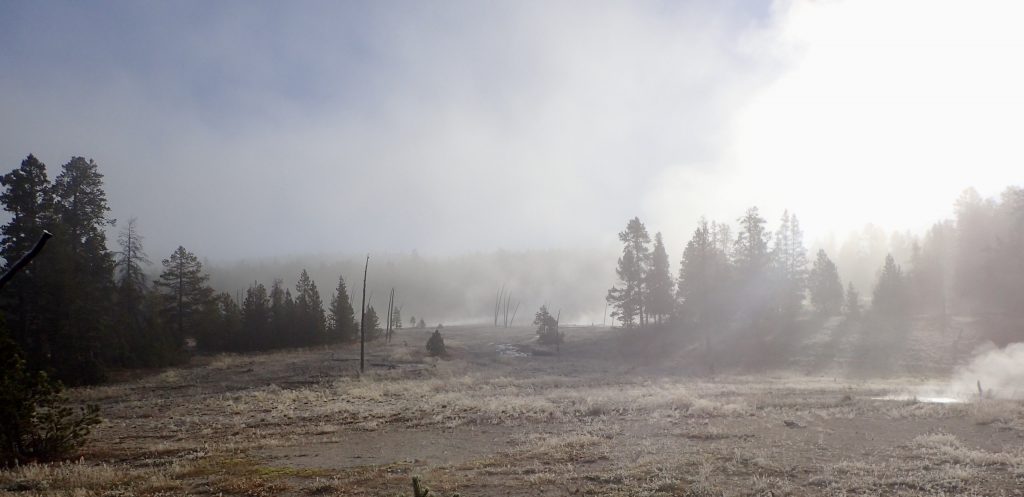
We keep trying to see Grand Prismatic Spring, but it has yet to cooperate. Still, the area has some beautiful sights.
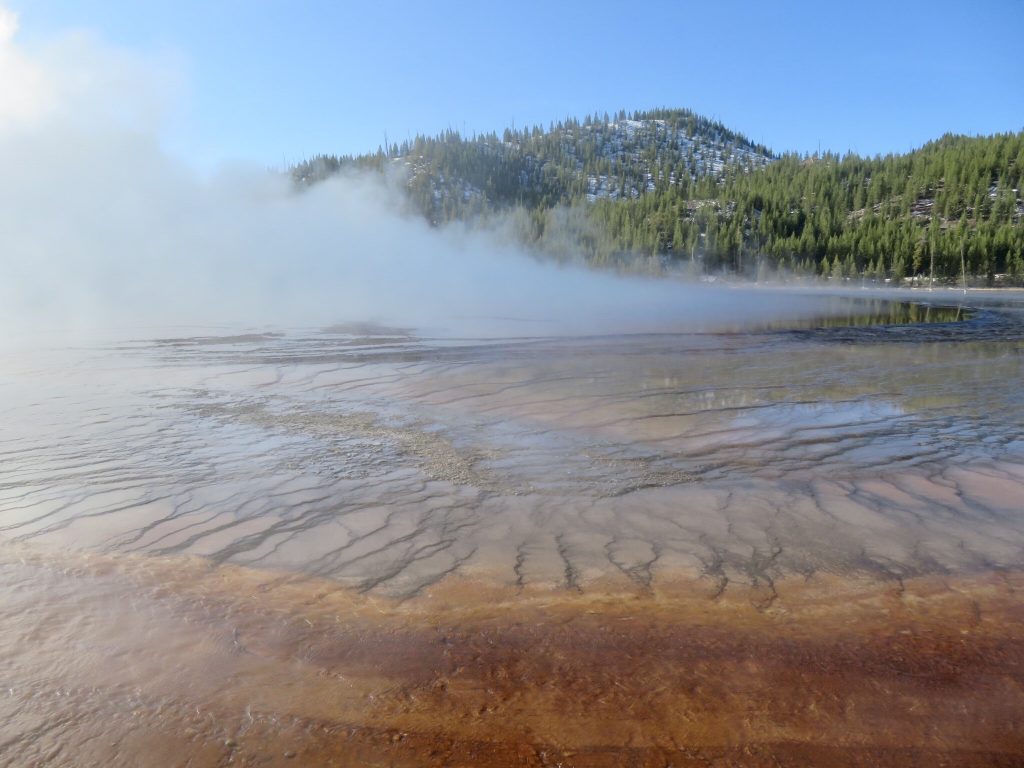
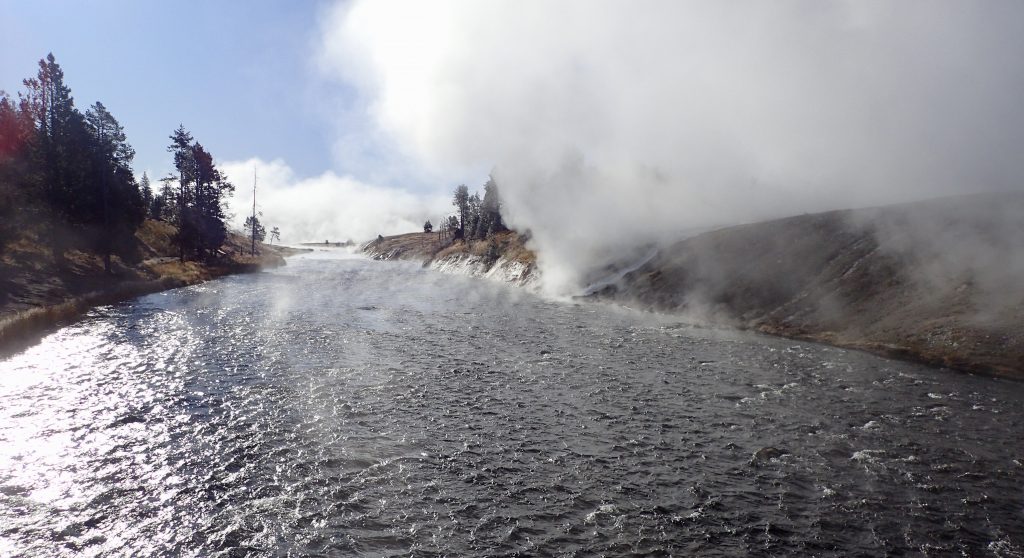
Geysers: Of course we had to sit for the obligatory Old Faithful eruption—still spectacular after all these years.
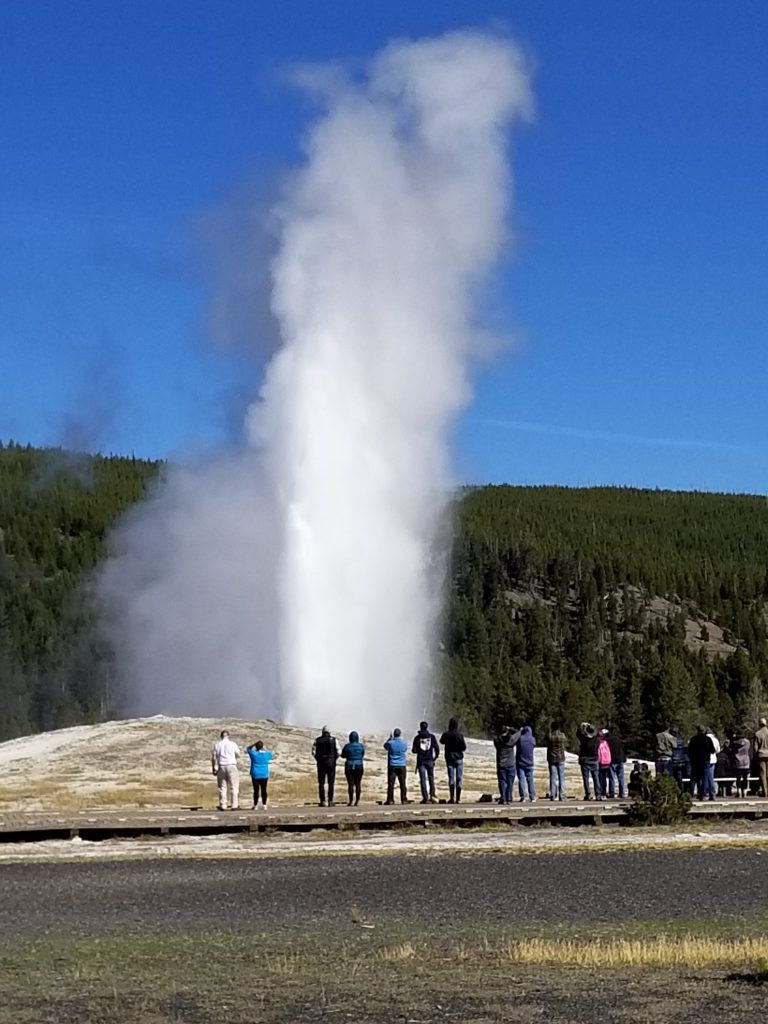
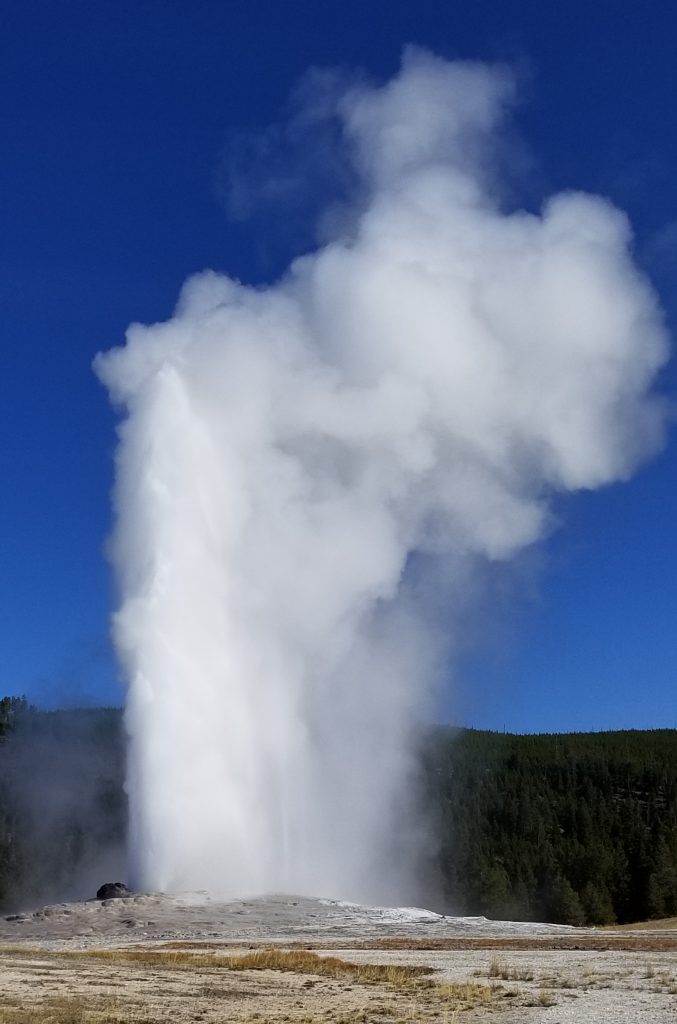
Then we hopped on our bikes to ride to see Morning Glory Pool (one of my favorites) and the eruption of Daisy Geyser.
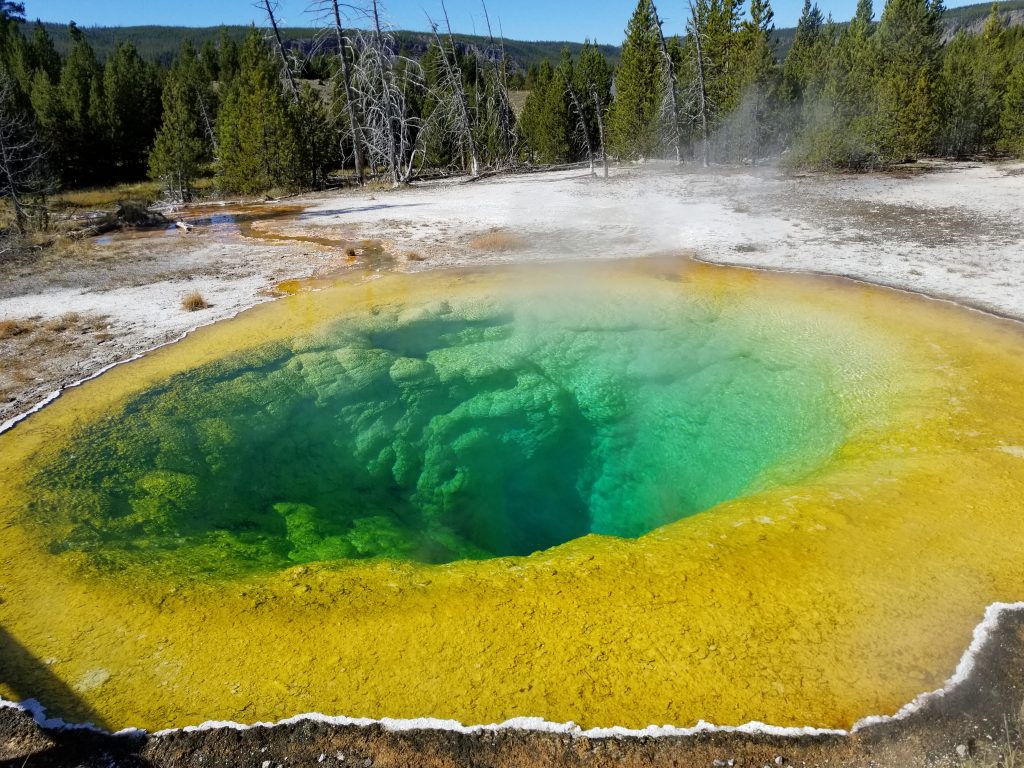
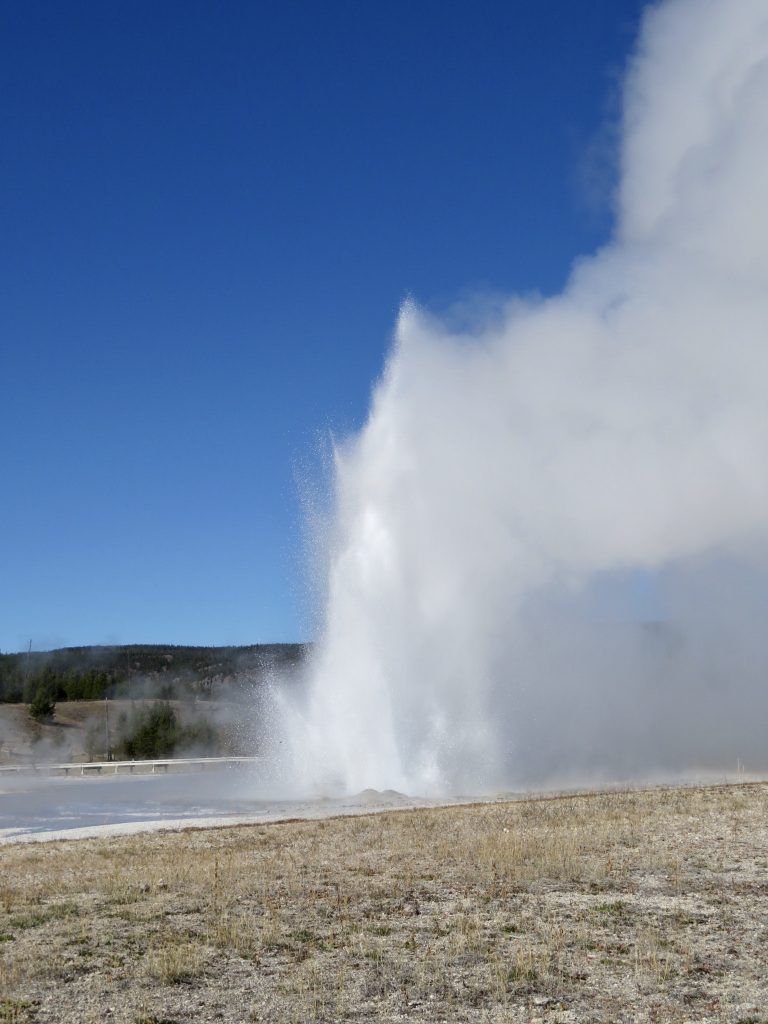
A short hike to, and short wait at, Grand Geyser provided us with one of our best ever geyser eruptions—Grand Geyser definitely earned its name (better than Old Faithful in our opinion).
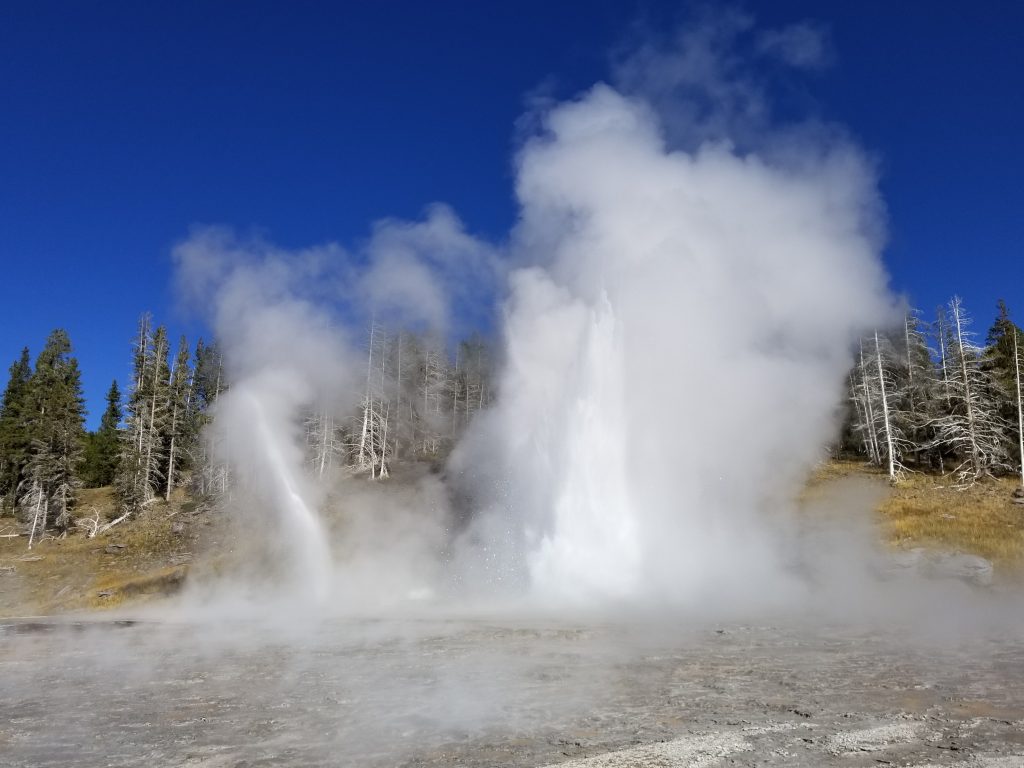
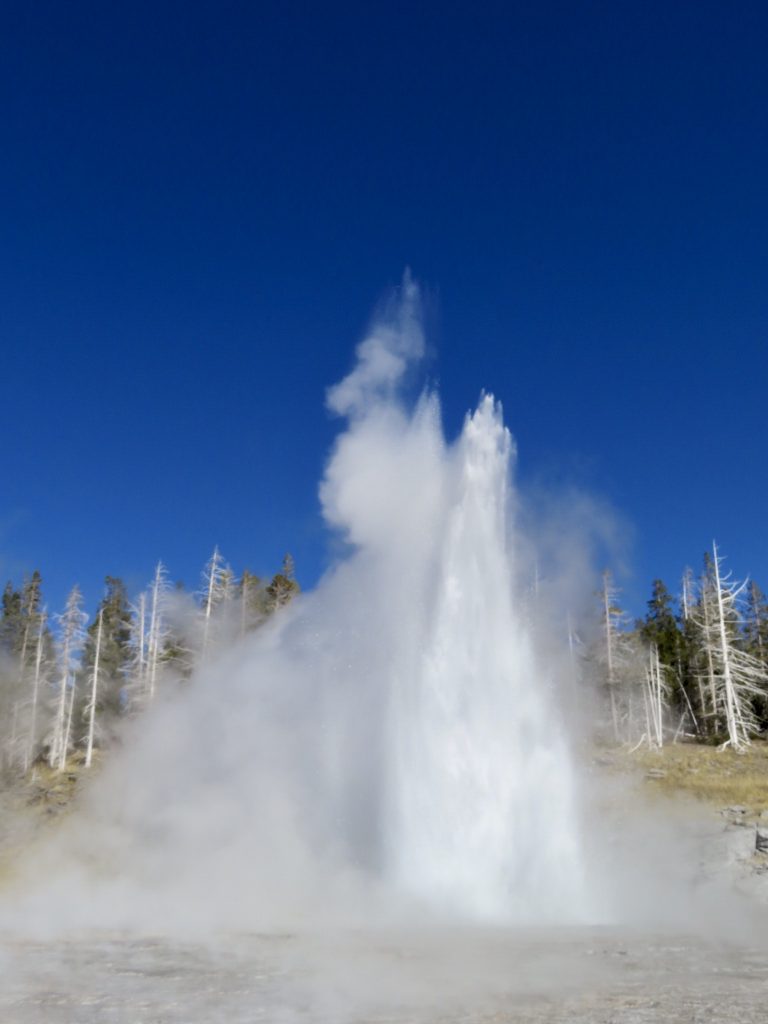
We then drove to Black Sand Basin and Biscuit Basin to catch pictures of our favorite sapphire-colored pools. A second great day in the park.
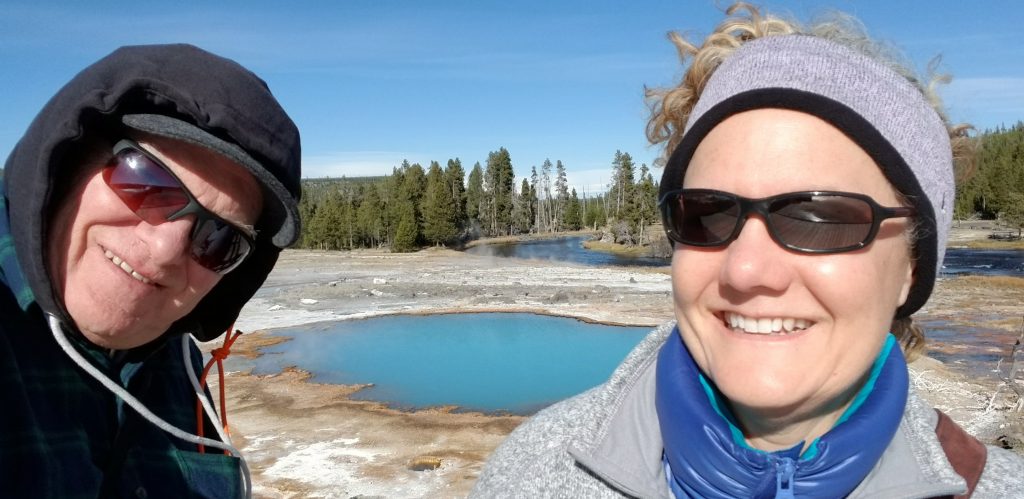
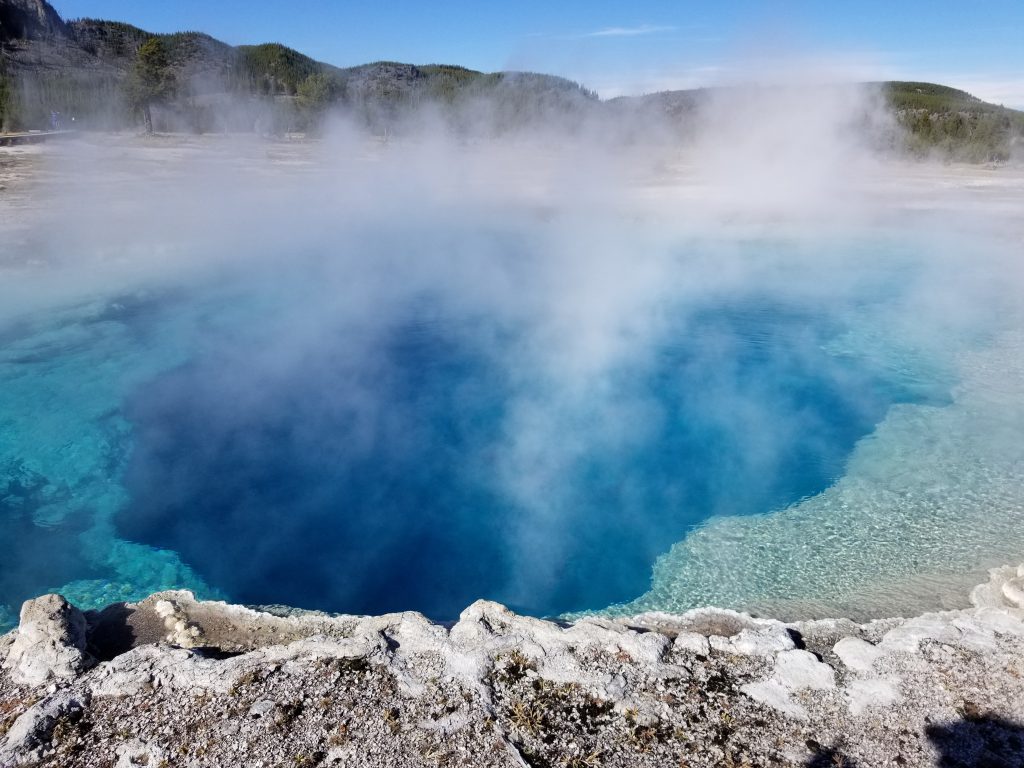
Day 3 in Yellowstone began at 4:00 a.m., when we got up in the freezing cold and headed up the frozen road to Mammoth Hot Springs to meet our Wolf Tracker (wolftracker.com) guide at 6:00. We headed out in Nolan’s SUV, learning more about the history and geography of the area as we rode through the northern part of the park.
Wildlife: Once we entered the Lamar Valley, we hiked up a small hill and Nolan set up spotting scopes so we could view the Junction Butte wolf pack just beginning to get active after the sun came up. Small dots on our camera, but very detailed through the spotting scopes, the wolf pack included 10 adults and juveniles that we watched for over 30 minutes. Click here to see the two-minute video that our guide filmed through the spotting scope.
Oh yeah, and there was a grizzly in the background, just wandering among the trees.

After our fingers and toes were sufficiently chilled by the 25-degree temperature, we packed up the spotting scopes and headed further down the road to the other end of Lamar Valley, where we watched a male moose with a strange growth on his side and a few mountain goats (way up on the side of the mountain). We had not previously been successful in seeing mountain goats, so this was a particular thrill.
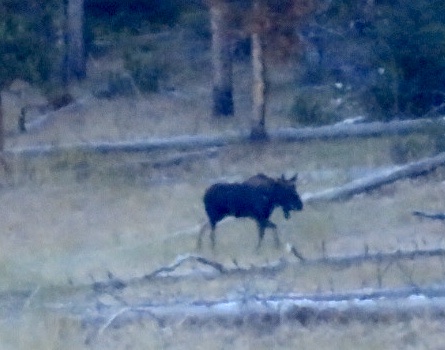
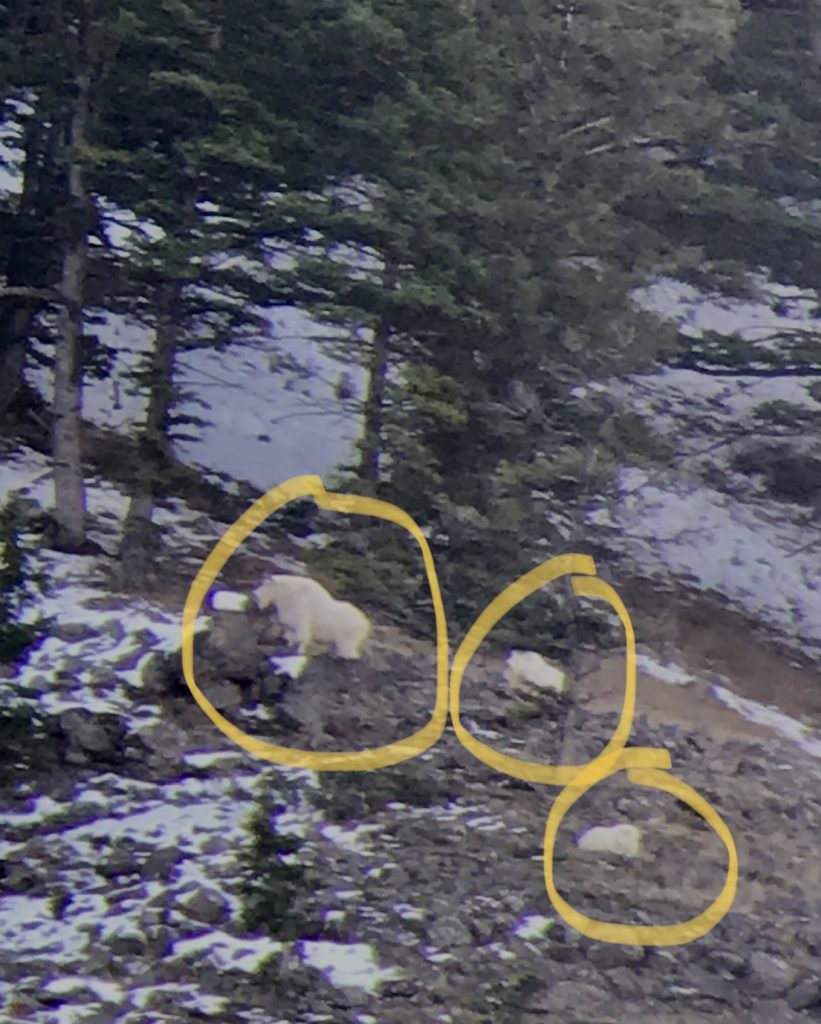
Another stop further up the road gave us a chilly but sunny breakfast, two more moose and two more mountain goats. On the way back through Lamar Valley, we stopped at another lookout, hiked up a short bison trail and again set up the spotting scopes to watch the Junction Butte pack who had moved further down the valley. How delightful to watch the pups playing with each other, submitting to the alpha male and hanging out while waiting for each other to catch up.
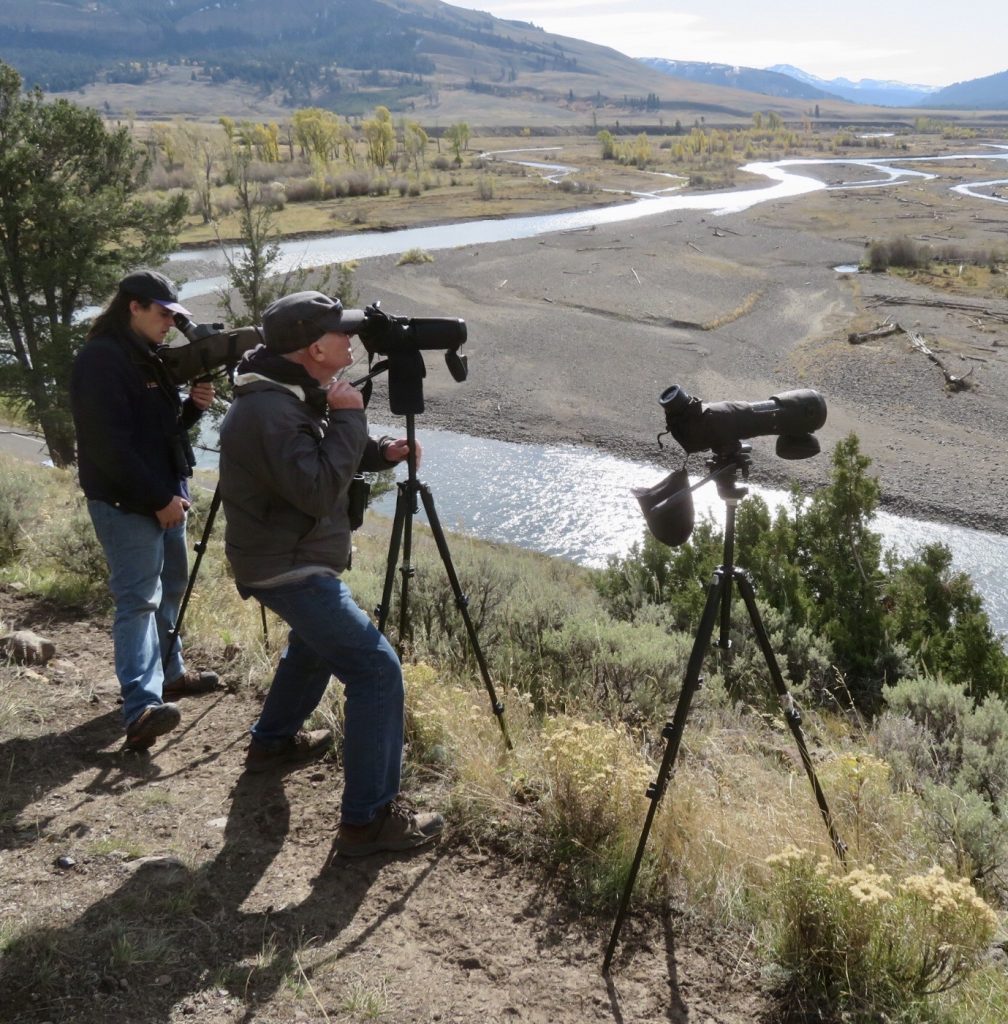
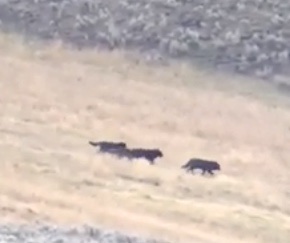
Nolan our guide also pointed out an American kestrel (no photo), a juvenile golden eagle, and some bighorn sheep.
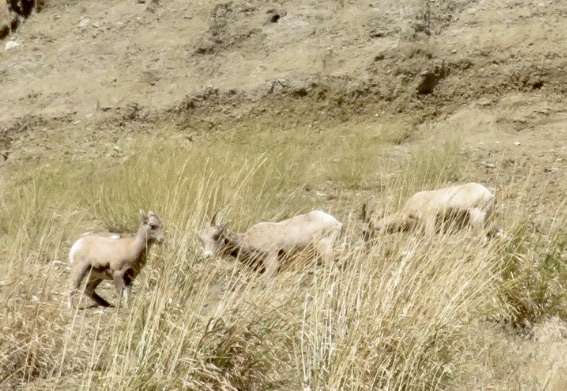
Further up the road, we encountered a solitary pronghorn on the right and a hunting coyote on the left.
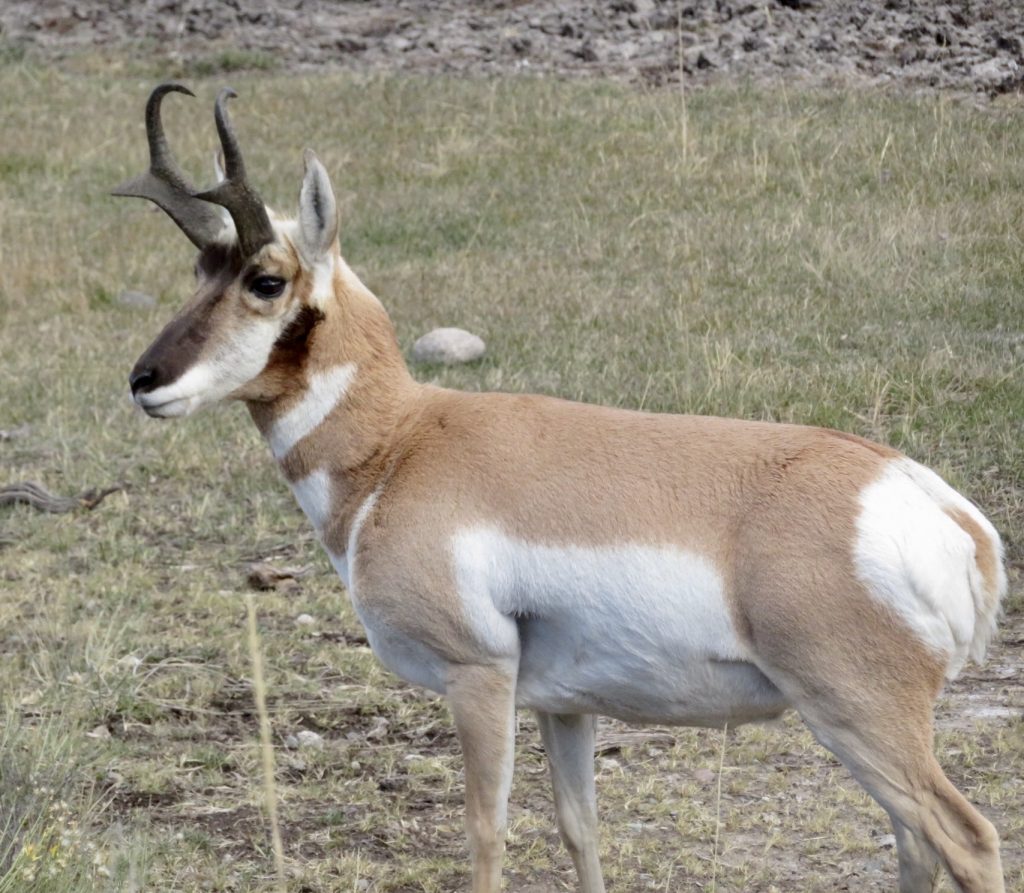
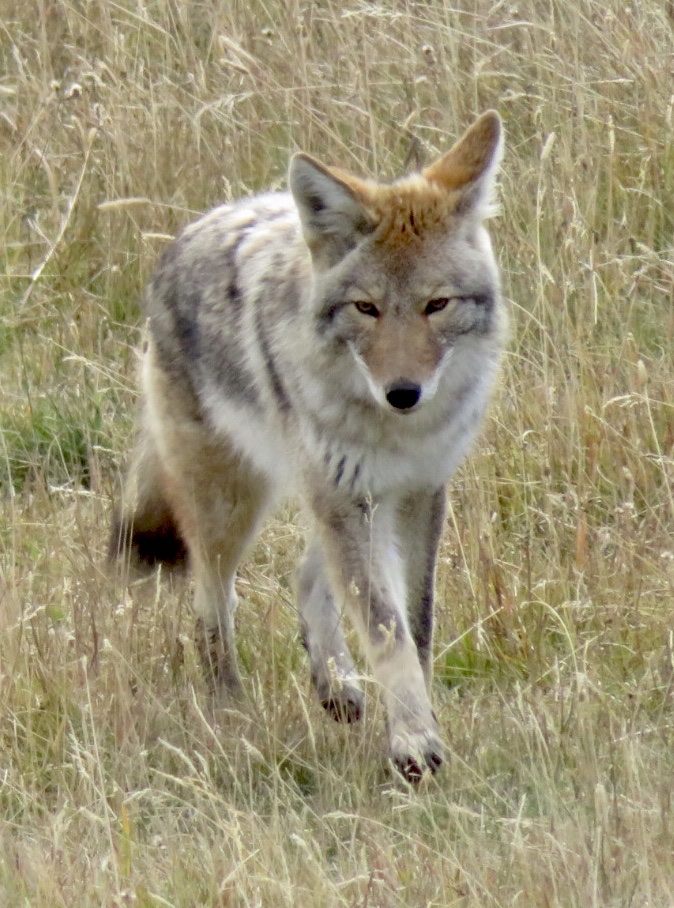
Wow—what an experience with Wolf Tracker! We saw a wolf pack (twice), a grizzly bear, moose, mountain goats, bighorn sheep, a coyote, pronghorn, bison (of course), elk, a bald eagle, a kestrel, and a golden eagle in our 7-hour excursion. Very few of these critters would we have spotted on our own. Thank you, Nolan! (nolandarrstudio.com)
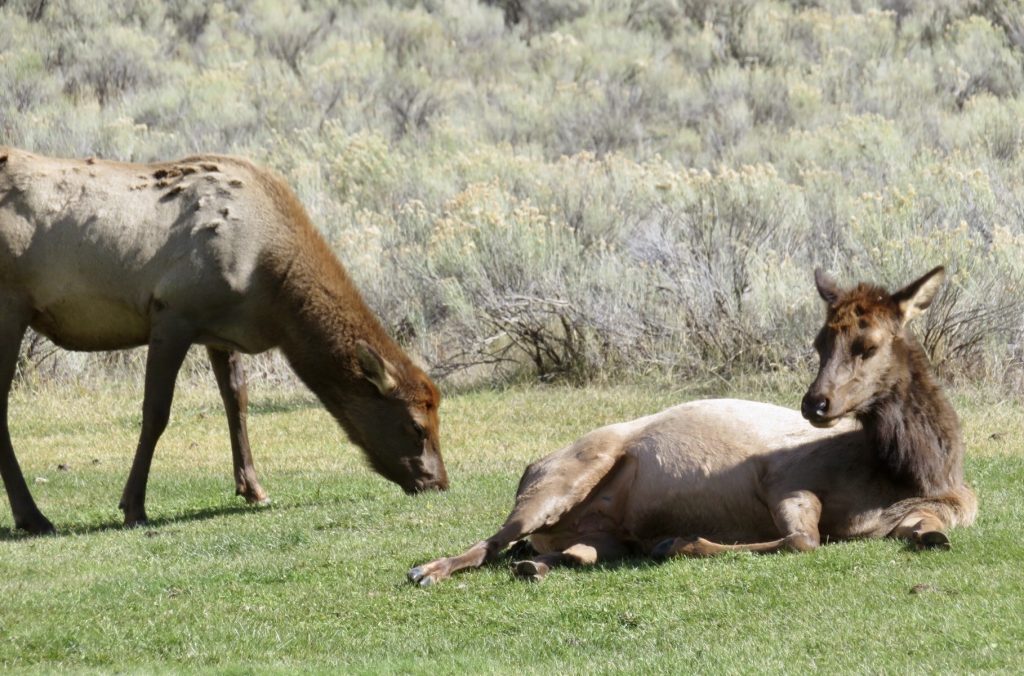
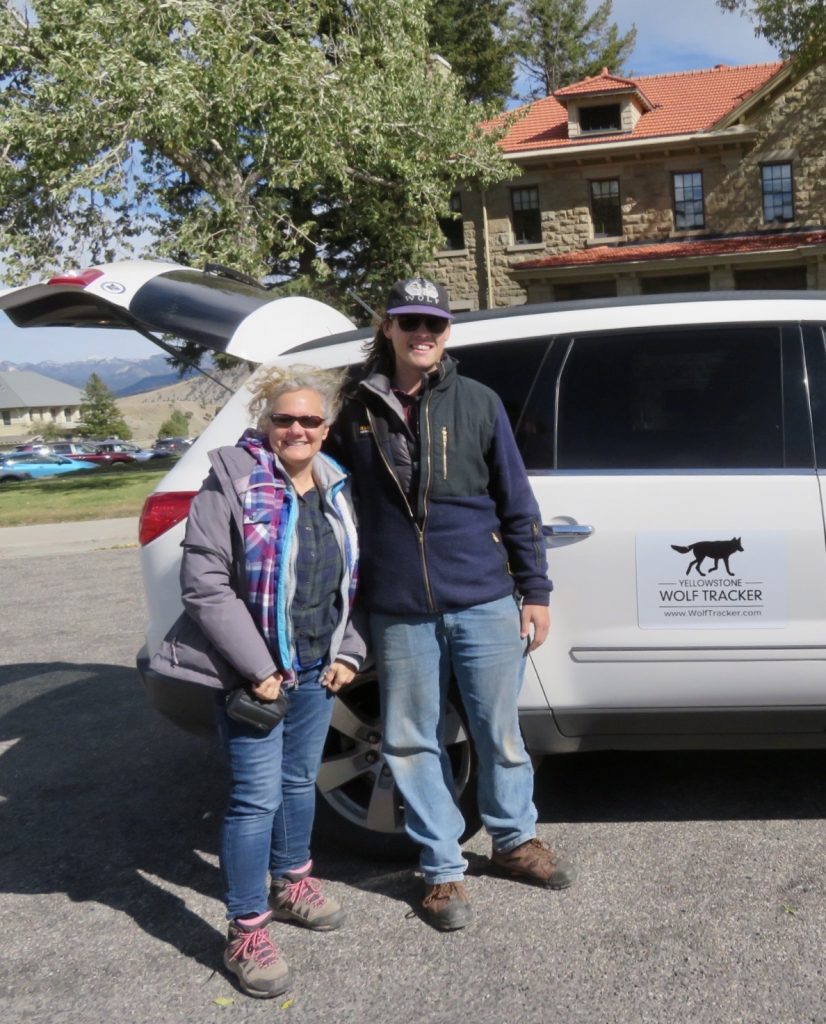
Weather: We had been monitoring the weather forecasts carefully and knew a snowstorm was coming in. We had to decide whether to stay in West Yellowstone, where we would likely be snowbound for 2-3 days, unable to go into Yellowstone National Park and probably with temperatures near zero and too cold to do much of anything outdoors. The other option was to cut and run, leaving our RV park as soon as we got back from our Wolf Tracker adventure. That’s what we did, packing up in 30 minutes and leaving at 4:00 p.m. (on the same day we got up at 4:00 a.m.) to head south into Idaho and out of the storm’s path. Our Yellowstone adventures were cut a bit short, but we packed a lot into our three days there, so there were no regrets as we headed south.
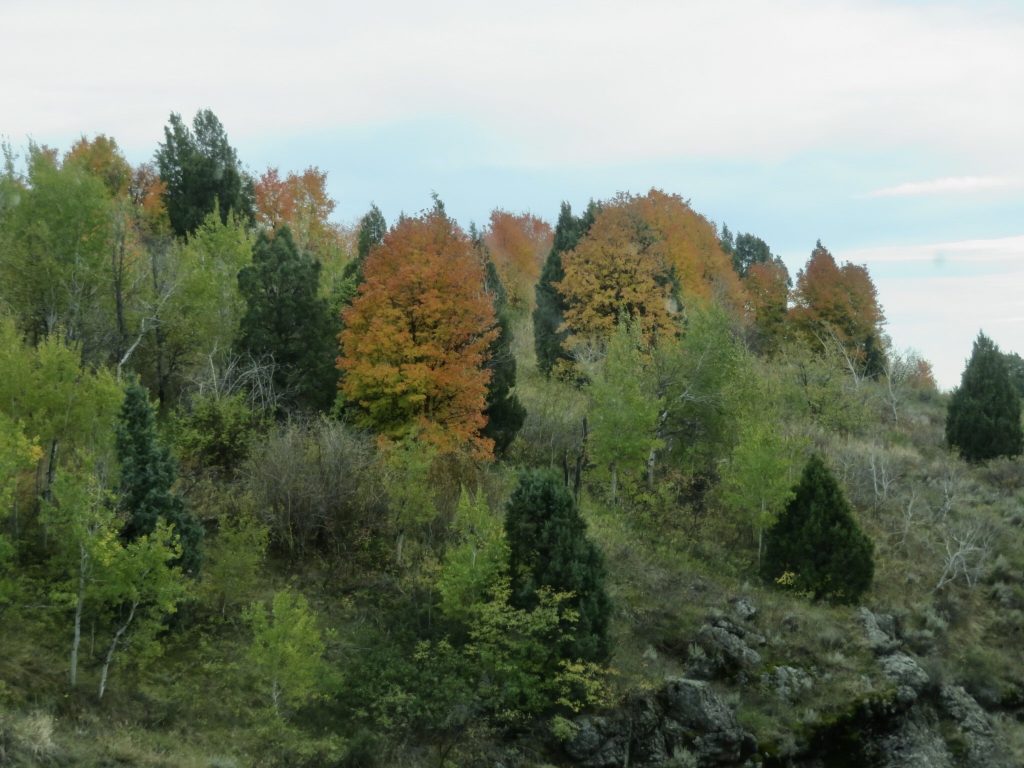
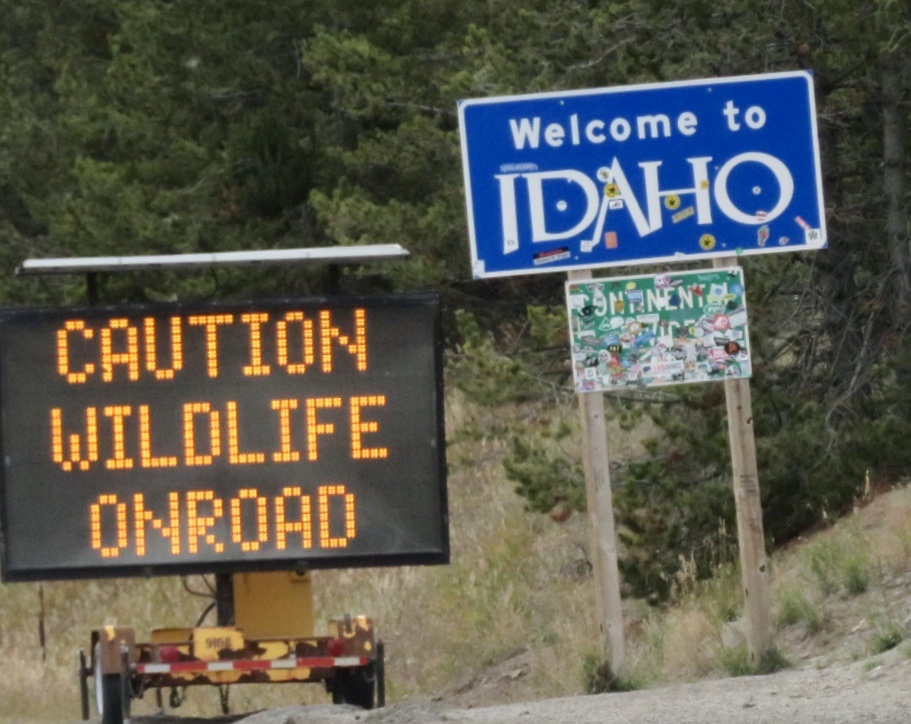

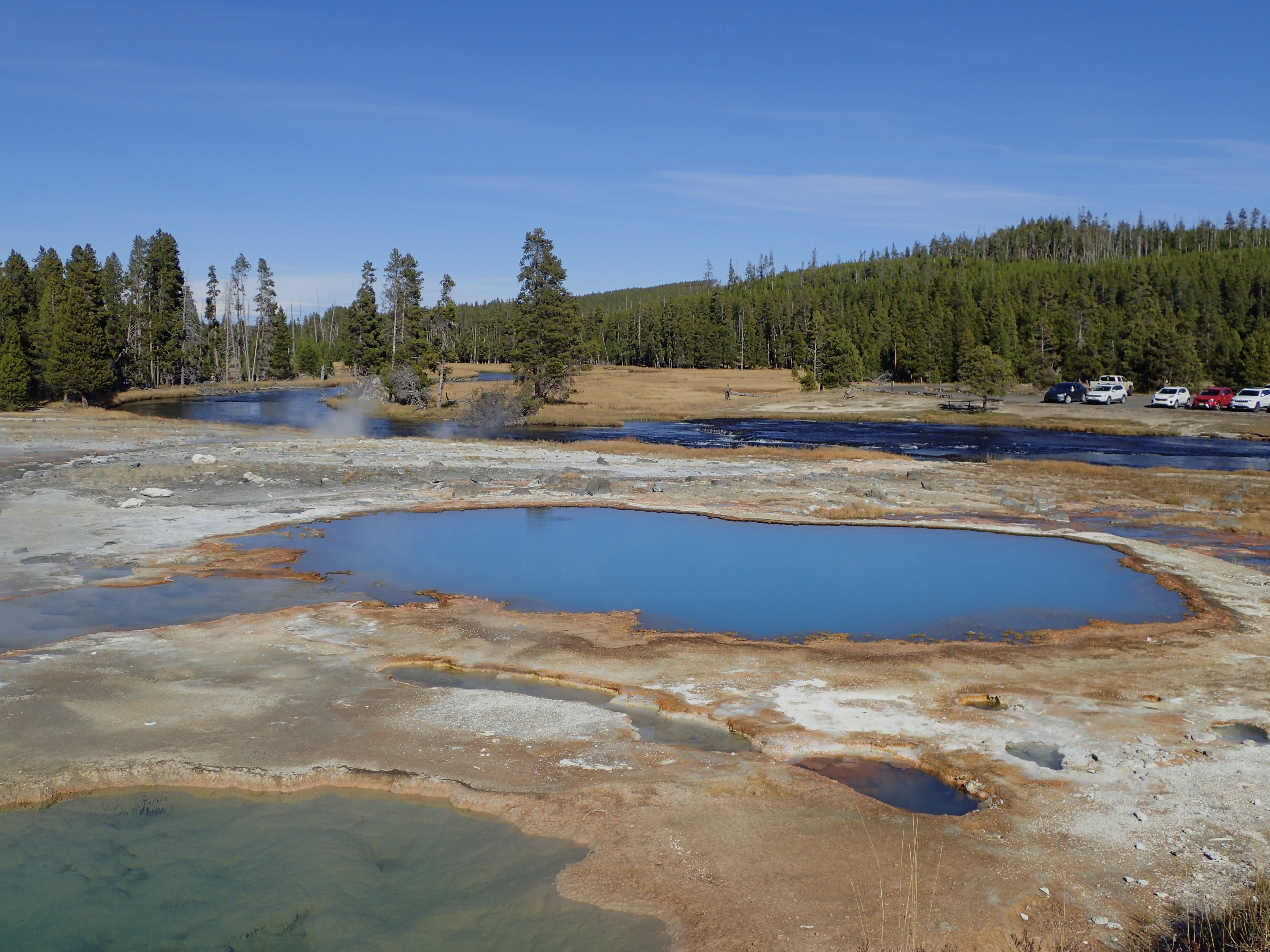
Great wildlife photos! What an amazing experience! And cold! Brrrrrrrr❄️❄️❄️❄️
You’re right, Suz. It was very cold. But when we got past the cold, it was beautiful to see the sights and the animals. Thanks for reading and commenting! See you soon.